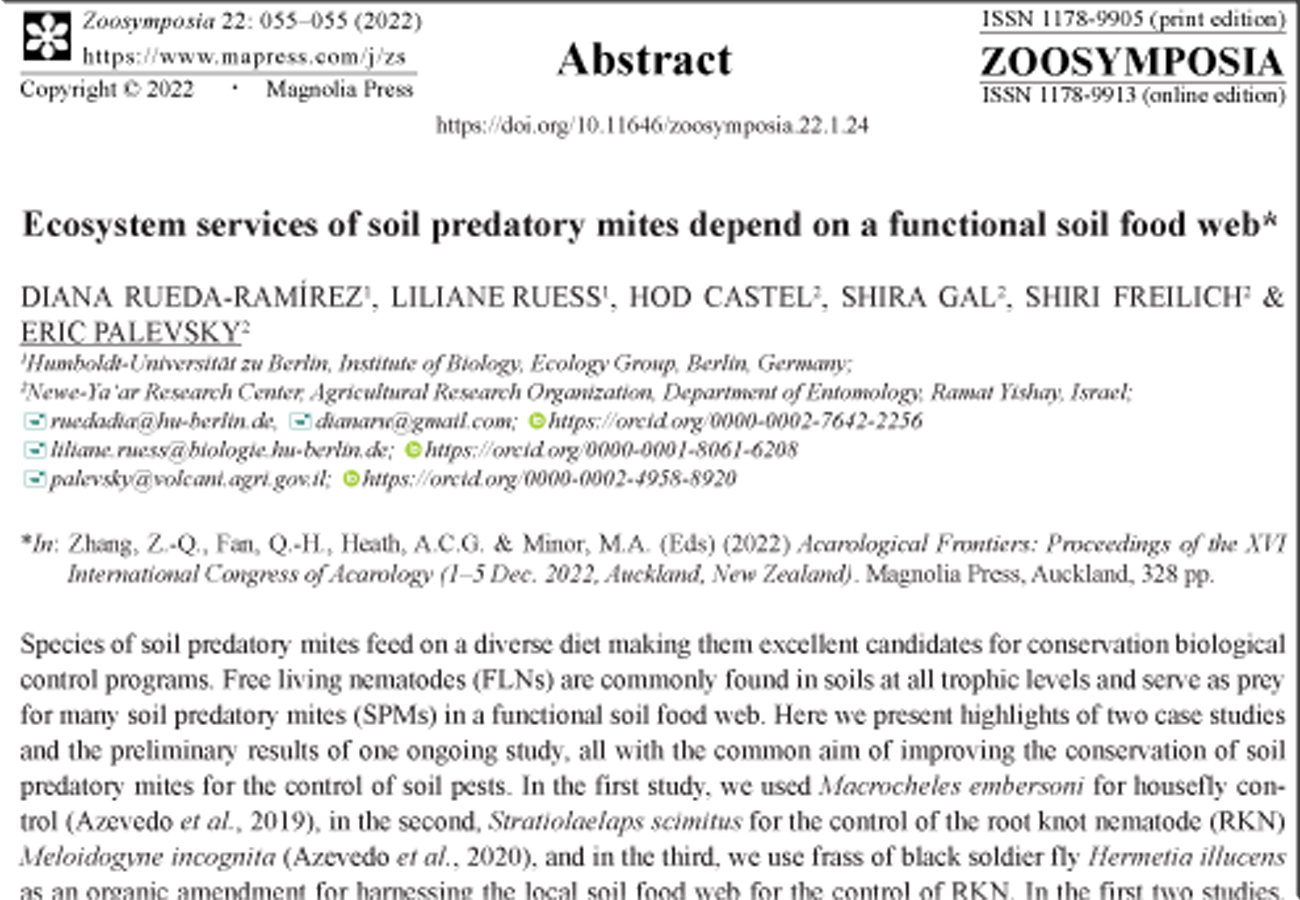Abstract
Species of soil predatory mites feed on a diverse diet making them excellent candidates for conservation biological control programs. Free living nematodes (FLNs) are commonly found in soils at all trophic levels and serve as prey for many soil predatory mites (SPMs) in a functional soil food web. Here we present highlights of two case studies and the preliminary results of one ongoing study, all with the common aim of improving the conservation of soil predatory mites for the control of soil pests. In the first study, we used Macrocheles embersoni for housefly control (Azevedo et al., 2019), in the second, Stratiolaelaps scimitus for the control of the root knot nematode (RKN) Meloidogyne incognita (Azevedo et al., 2020), and in the third, we use frass of black soldier fly Hermetia illucens as an organic amendment for harnessing the local soil food web for the control of RKN. In the first two studies, complementing the diet of predatory mites with the FLN Rhabditella axei in their culture medium resulted in higher predator abundance and better biological control, compared to the negative control and the release of predators without FLNs and microbiota. In the third study the effect of the soil amendment on soil biota and RKN control differed among soils. We expect that soil amendments alter biocontrol efficacy, and that these effects are dependent on the biodiversity of soil biota as well as abiotic soil properties, and that caring for soils is a pre-requisite for successful conservation biological control.
References
Azevedo, L.H., Leite, L.G., Chacon-Orozco, J.G., Moreira, M.F.P., Ferreira, M.P., González-Cano, L.M., Borges, V., Rueda-Ramírez, D., de Moraes, G.J. & Palevsky, E. (2019) Free living nematodes as alternative prey for soil predatory mites: An interdisciplinary case study of conservation biological control. Biological Control, 132, 128–134.
Azevedo, L.H., Moreira, M.F.P., Pereira, G.G., Borges, V., de Moraes, G.J., Inomoto, M.M., Vicente, M.H., de Siqueira Pinto, M., Peres, L.E.P., Rueda-Ramírez, D., Carta, L., Meyer, S.L.F., Mowery, J., Bauchan, G., Ochoa, R. & Palevsky, E. (2020) Combined releases of predatory mites and provisioning of free-living nematodes for the biological control of root-knot nematodes on ‘Micro Tom tomato’. Biological Control, 146. https://doi.org/10.1016/j.biocontrol.2020.104280


